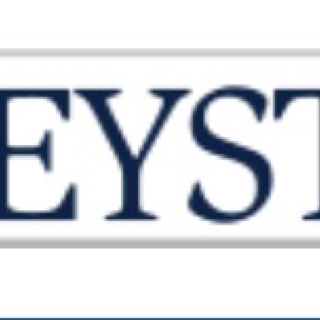Information
-
Audit Title
-
Document No.
-
Client / Site
-
Conducted on
-
Prepared by
-
Location
-
Personnel
Part 1: GENERAL INFORMATION
The responsible person for fire safety
-
Name of the responsible person
-
Contact details of responsible person
1 The Building
-
Number of Floors
- 1
- 2
- 3
- 4
- 5
- 6
- 7
- 8
- 9
- 10
-
Floor area: (m2 per floor)
-
Brief details of construction:
-
Occupancy type:
2 The occupants
-
Maximum number of occupants at any given time:
Fire Strategy
-
Describe Fire Strategy.
3 Occupants at special risk, e.g. Sleeping, lone workers, people with disability, remote areas?
-
List
4 Previous Fire loss experience
-
Provide detail of previous fire loss.
-
Dates of event
-
Date of event
Previous reports
-
All required actions from previous Fire Risk Assessment completed and signed off?
5 Other relevant background
-
Details of any previous enforcement action
-
Details and dates.
Part 2: FIRE HAZARDS AND ELIMINATION OR CONTROL
6 Electrical sources of ignition
-
Are reasonable measures taken to prevent fires of electrical origin?
-
Is the fixed wiring installation periodically tested and inspected every five years?
-
All actions rated C1 and C2 completed?
-
Are portable appliances tested/inspected annually?
-
Is there a suitable policy about the use of personal electrical appliances?
-
Is there a suitable limitation on the use of trailing leads and adapters?
-
Is all electrical equipment tested and records on site?
7 Smoking
-
Are reasonable measures taken to prevent fires as a result of smoking?
-
Is smoking prohibited in the building?
-
Are there suitable arrangements made for those who wish to smoke?
-
Is there absence of any evidence of breaches of smoking policy?
-
Is the appropriate smoking prohibition notice displayed at the building's entrance?
8 Arson
-
Does the basic security against arson appear reasonable?
-
Is there sufficient control of unnecessary fire load in close proximity to the building or available for ignition by outsiders?
9 Portable heaters and heating installation
-
Is the use of portable heaters avoided as far as reasonably practicable?
-
If portable heaters are used, are the more hazardous types (radiant bars and LPG) avoided?
-
If portable heaters are used are suitable measures taken to minimise the risk of ignition of combustible materials?
-
Are fixed heating installations subject to regular maintenance?
10 Cooking facilities
-
Are reasonable measures taken to prevent cooking fires?
-
Are filters changed and ductwork cleaned regularly?
-
Are suitable extinguishers available?
11 Lightning
-
Does the building have lightning protection system if required? (if yes has it been tested and are records of testing kept)
12 Other significant ignition sources that warrant consideration
-
List other ignition sources and controls required.
13 Housekeeping
-
Is the standard of housekeeping adequate?
-
Are combustible materials separated from ignition sources?
-
Is the unnecessary accumulation of combustibles and waste avoided?
-
Is there appropriate storage of hazardous materials?
-
Are combustible materials stored appropriately?
14 Hazards introduced by contractors and building works
-
Is there sufficient control over works by contractors (e.g. Permits to work & hot works permits)?
-
Are there arrangements for the safe storage of gas bottles and others hazardous materials
-
Are fire safety conditions and instructions communicated to contractors?
15 Dangerous Substances
-
Are dangerous substances present on the premises adequately controlled?
Part 3: FIRE PROTECTION MEASURES
16 Means of escape
-
Is the building provided with adequate means of escape in case of fire?
-
Are there sufficient exits?
-
Are exits easily and immediately openable where necessary?
-
Do fire exits open in the direction of travel where necessary?
-
Adequate directional signage?
-
Have sliding or revolving doors been avoided as fire exits?
-
Fire doors not propped open?
-
Are there adequate means of securing exits?
-
Are there reasonable distances of travel where there is a single direction of travel?
-
Are there reasonable distances of travel where there are alternative means of escape?
-
Are escape routes adequately protected?
-
Are there suitable fire precautions for all inner rooms?
-
Are escape routes unobstructed?
-
Are there suitable means of escape for disabled occupants?
17 Measures to limit fire spread and development.
-
Is there a sufficient standard of compartmentation and sub-compartmentation?
-
Are linings that promote fire spread avoided as far as reasonably practicable?
18 Escape lighting
-
Is there a reasonable standard of escape lighting provided?
19 Fire safety signs and notices
-
Are fire safety signs and notices suitable and sufficient?
20 Means of giving warning in the event of fire
-
Describe fire alarm type.
-
Is there remote transmission of alarm signals?
21 Manual fire extinguishing appliances
-
Is there suitable and sufficient provision of portable fire extinguishers?
-
Are hose reels provided?
22 Relevant automatic fire extinguishing systems
-
Type of system:
-
Comments and observations:
23 Facilities, equipment and devices for the protection of Fire-Fighters
-
Types of facilities:
-
Comments and observations:
Part 4: MANAGEMENT OF FIRE SAFETY
24 Procedures and arrangements
-
Person responsible for fire safety:
-
Are there competent persons available to assist in implementing fire safety arrangements?
-
Are appropriate fire procedures in place? (including arrangements for calling the fire service)
-
Fire Emergency Plan in place and details recorded, having regard to the fire strategy?
-
Does the plan take account of other Fire Emergency Plans applicable in the building?
-
Is the Fire Emergency Plan readily available for staff to read?
-
Is the Fire Emergency Plan available to the enforcing authority?
-
Emergency plan and strategy communicated to all staff?
-
Are there persons nominated to respond to fire?
-
Are persons nominated to assist with evacuation?
-
Is there appropriate liaison with the fire service?
-
Do routine in-house inspections of fire precautions take place?
25 Training and drills
-
Are staff given instruction on induction?
-
Do staff receive periodic refresher training at suitable intervals?
-
Are staff with special responsibilities given appropriate training?
-
Are fire drills carried out at appropriate intervals?
26 Testing and maintenance
-
Is the workplace adequately maintained?
-
Is there weekly testing and periodic servicing of the fire detection and alarm system and all testing recorded in fire log.
-
Is there monthly, six-monthly and annual testing of the emergency lighting and all testing recorded in fire log?
-
Is there annual maintenance and testing of fire extinguishing equipment and all testing recorded in fire log?
-
Is there annual inspection and test of the lightning protection system and this is recorded?
-
Is there six monthly and annual testing of wet/dry risers, and recorded?
-
Is there weekly testing and periodic inspection of sprinkler installations and recorded?
-
Is there routine checks of fire doors and final exit doors and recorded?
-
Other relevant inspection and test
Part 5: RISK RATING AND RECOMMENDATIONS
-
Significant findings requiring urgent attention.
-
Other findings requiring action.
-
Enforcement action likely?
-
Overall assessment.
Re-Assessment
-
Recommended date for re-assessment
-
Signed by site representative.
-
Signed by auditor.
-
Diagrams








